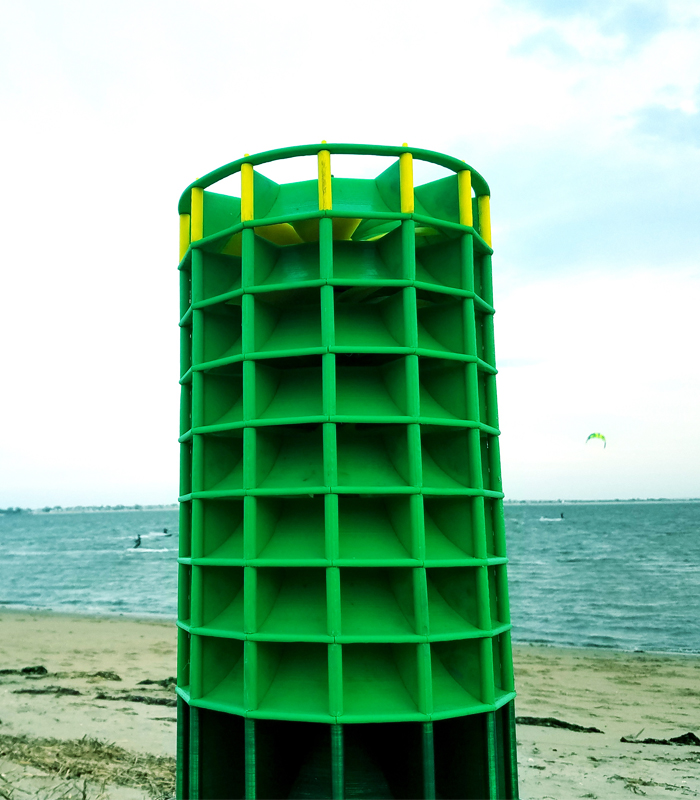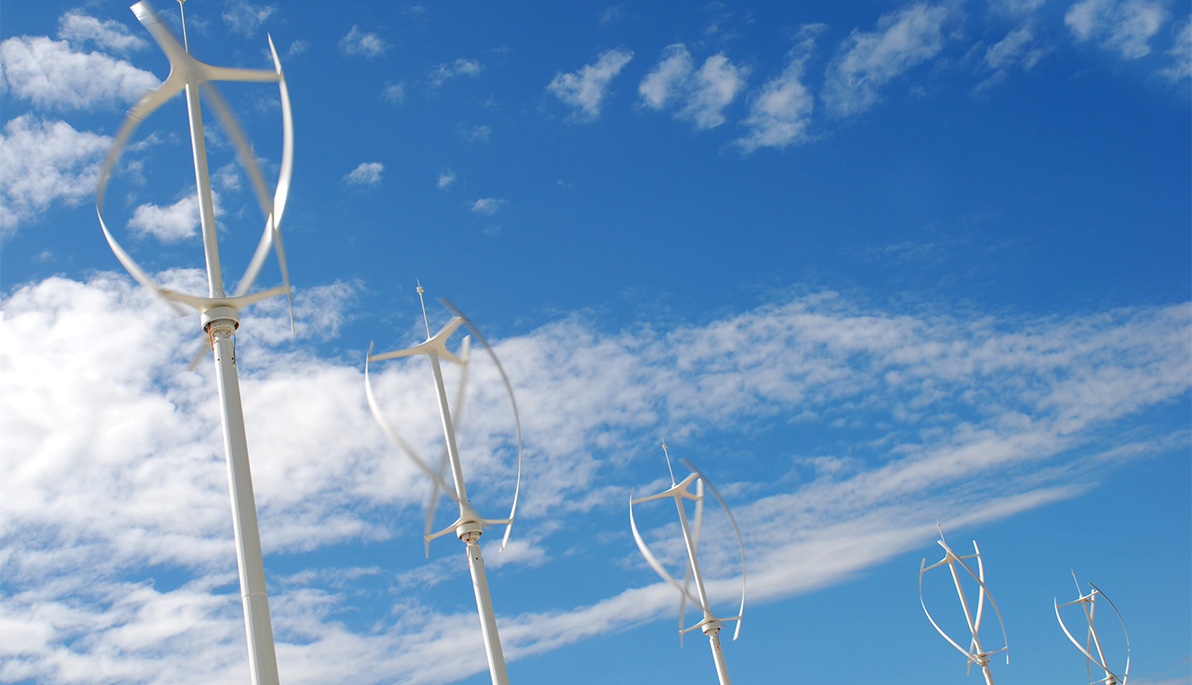News
Q&A: Environmental Technology Students On Changing the Face of Wind Power
August 1, 2017
Maksim Aginskiy and Ilya Tsitron, two master’s candidates in environment technology and sustainability, sat down with The Box to talk about the vertical axis wind turbine they developed and how it differs from existing turbines. Their innovative design just might change wind power as we know it.
What is the difference between vertical and horizontal axis wind turbines?
The horizontal axis wind turbine is the most common one. The rotating axis of the horizontal turbine is parallel with the ground and can generally produce more electricity than the vertical turbine, but it requires massive tower construction to support the heavy blades and generator and does not produce well in turbulent winds.
The axis of the vertical axis wind turbine is perpendicular to the ground. Vertical turbines can produce well in tumultuous wind conditions and are powered by wind coming from any direction. They have lower wind startup speeds than horizontal turbines and can be built in locations where taller structures are prohibited.
However, most vertical turbines have an average decreased efficiency than horizontal turbines because of additional drag, and they are also usually installed closer to the ground, where wind speed is slower.
How does your vertical axis wind turbine differ from other vertical wind turbines?
So far, no one has come up with a vertical axis wind turbine design that is at least as efficient and as scalable as a horizontal axis turbine. We believe we have such a technology and are working hard to prove it.
The problem with most vertical axis wind turbines is that there is a huge limitation to their scalability. Our turbine can be as small as a person or as big as the Empire State Building. The turbine would ideally be less expensive to produce and maintain and would produce more energy [compared to other turbines].

A small-scale prototype of Maksim Aginskiy and Ilya Tsitron’s vertical axis wind turbine. It is shaped like a rounded tower with the propellers inside the structure. Their innovative design can be scaled and is better for the environment because it wouldn’t affect local wildlife. Wind travels through the structure, but not birds.
Our turbine is also better for the environment than horizontal axis wind turbines and wouldn’t affect local wildlife. Nets will allow wind to travel through the structure, but not birds. In addition, there are restrictions to where conventional horizontal turbines can be placed. Horizontal turbines often have to be built 200 feet into the seabed to be stable. Our turbine can be built in heavily populated areas, on the roof of a building, or on a ship. Since our structure is stable on its own, it can even be placed on a float in the water.
Can you describe the turbine you have designed?
Our turbine looks like a rounded tower, and its propellers are inside the structure. The turbine can receive wind from any direction and is designed to redirect air up the tower. The structure has several levels, each of which has vertical blades rotating horizontally. There are inclined walls at each level, so the wind has nowhere to go but up.
Where have you presented the turbine?
We have represented NYIT at many conferences and held several workshops.
We recently attended and hosted a workshop at Farmingdale College, where we educated elementary and junior high school students about environmental sustainability and renewable energy, presented the wind turbine as an example of renewable energy technology, and showed them how it operated. Through this workshop, we discovered that our turbine model would make an excellent educational tool to teach environmental sustainability.
We also presented our turbine prototype at Long Island Technology Day and at a meeting of the New York chapter of the Association of Energy Engineers. In addition, we spoke to other engineers and lawmakers about our research at Stony Brook’s Offshore Wind Symposium and Energy Strategic Partnership Conference.
What’s next for your research project? The next step in the development of the turbine is to make improvements to the design that increase the energy output and efficiency. We will make improvements based on the results of our experiments in the wind tunnel at the NYIT-Long Island campus. We will also use the 3-D printer at NYIT-Long Island to create our new design and eventually work on scaling the model up.
This interview has been edited and condensed.




